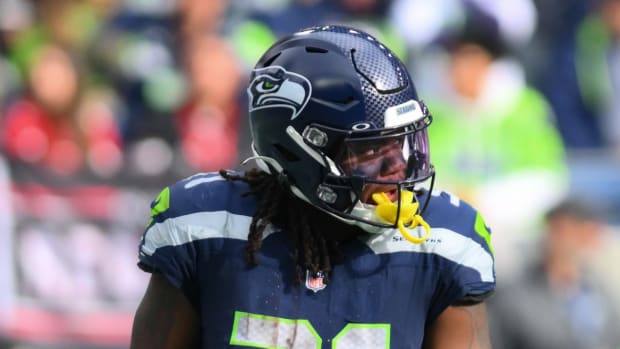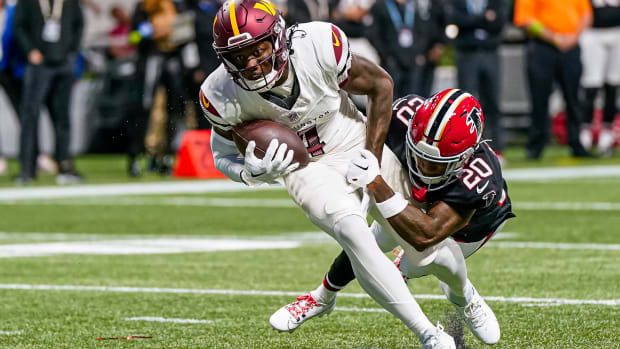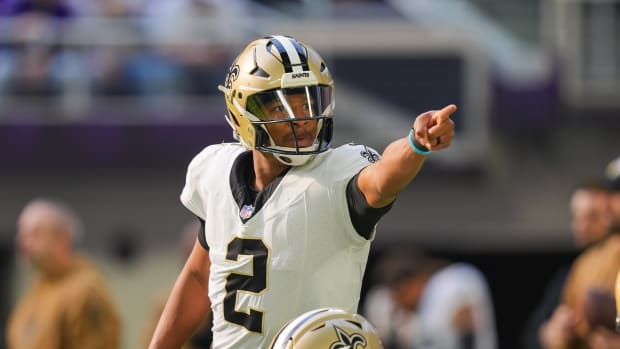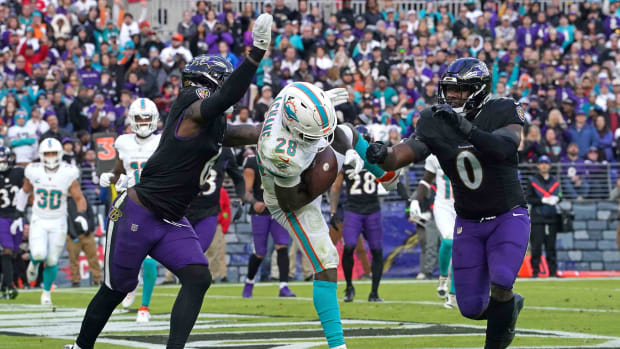Scouting the Hall of Famers
With the Pro Football Hall of Fame set to induct its 2011 class on Saturday, SI.com asked resident scout Tony Pauline to break down the style and skillsets of each of the six player inductees.
Positives: Amazingly quick defensive lineman that constantly disrupted the action in the opponent's backfield ... Fired off the snap with a terrific first step, effectively used his hands to protect himself and played with great balance ... Fast off the edge, forceful up the field and consistently exploited the league's top pass-blockers ... Fluid on his feet and displayed the ability to immediately alter his angle of attack and pursue the action from the backside.
Negatives: Lacked classic size and was not a stout run defender ... More of a first-step lineman and struggled disengaging from blocks once opponents got their hands on him.
Analysis: When the Chicago Bears selected Richard Dent out of Tennessee State in the eighth round of the 1983 draft, little was expected from the late round pick, yet he quickly left his mark. Dent posted 17.5 sacks in 10 starts during his sophomore season and followed up with a 17-sack performance during the Bears' championship campaign of 1985. He was the perfect combination of athleticism, quickness and speed for Chicago's vaunted 46 defense, as defensive genius Buddy Ryan helped develop Dent into one of the league's most feared pass rushers.
Positives: Athletically gifted skill player that produced whenever he handled the football ... Incredibly elusive with the ability to make several defenders miss in the course of a single run and create yardage when seemingly nothing was available ... Possessed enough speed to beat defenders into the open field and then run to daylight ... Exceptional pass catcher out of the backfield and a true receiving threat in the underneath coverage or down the field ... Played smart, tough football, showing great instincts on the field besides getting quality results when called upon to block.
Negatives: Not a pounder inside or very effective in short yardage situations ... Was never a running back that could consistently handle 20 carries a game ... Struggled with injuries during the latter half of his career.
Analysis: When the Indianapolis Colts selected Marshall Faulk with the second pick of the 1994 draft, they envisioned the nifty runner as a do-it-all franchise ball carrier. Faulk added instant spark to a Colts offense that had regularly ranked in the bottom half of the league. Despite being surrounded by mediocre talent, opponents found Faulk almost impossible to stop. He took his game to another level after being traded to the St Louis Rams in 1999, setting single season best marks as a ball carrier and pass catcher and helping lead the franchise to a Super Bowl title. He enters the Hall of Fame as one of the most versatile backs to play in the NFL.
Positives: Intense and intelligent linebacker that prided himself on being a three-down defender ... Football smart, showed great anticipation skills and very instinctive on the field ... Fearless, fought hard until the whistle blew and threw his body around the field trying to make positive plays ... Fought off blocks and was a solid open-field tackler ... Deceptively fast and had the speed to make plays sideline to sideline against the run or pass.
Negatives: Lacked classic linebacker size even for the '70s, and was outmatched in coverage when facing taller tight ends.
Analysis: Hanburger was a complete player and leader on the field during his 14-year career with the Washington Redskins. Selected in the 18th round of the 1965 NFL draft, he was respected by teammates and opponents for playing with his heart on his sleeve and leaving it all on the field. In the day and age of specialists, Hanburger was a defender successful in all facets of the game. He is considered by many as one of the most underrated linebackers to ever play in the NFL.
Positives: Blue collar defender that occasionally saw action on the offensive line during his nine-year career ... Nasty linebacker that worked to intimidate opponents and finish the play ... Played through multiple injuries and was tough as nails ... Stout run defender who was one of the most dominant middle linebackers of his era ... Handled the place-kicking duties for the Los Angeles Rams throughout in his career ... Also spent time at offensive center.
Negatives: Not a fleet-footed linebacker that could chase sideline to sideline and minimally effective in pursuit.
Analysis: The second player chosen in the 1952 NFL Draft, Richter put his professional football career on hold, serving his country in the U.S. Army, before resuming his career with the Los Angeles Rams in 1954. He was a leader by example on the football field and labeled as one of the roughest players in the league during his nine-year career. His efforts on the field resulted in Richter being named to eight Pro Bowl teams.
Positives: Elite, two-sport professional athlete with rare speed and skill ... Transferred his natural athleticism into football skills, playing with solid fundamentals at cornerback and doubling as a game-changing return specialist ... Fast and explosive in all his actions ... Stayed step-for-step with opposing receivers everywhere on the field, possessed the speed necessary to recover from mistakes and played with great suddenness, flashing to the play from seemingly nowhere.
Negatives: Liked to showboat and as a result was targeted by opponents ... Never a truly physical corner that would voluntarily defend the run.
Analysis: The fifth pick in the 1989 NFL Draft, Sanders is the fourth player from that class to enter the halls of Canton. He was a dominant shutdown cornerback and was rarely challenged by opposing signal callers. Sanders had a flair for making highlight reel plays on defense and changed the momentum of games returning kicks and punts. He enters the Hall of Fame as arguably one of the best cornerbacks to ever play professional football.
Positives: Athletic, pass-catching tight end whose style of play is credited with revolutionizing the position ... Moved well about the field and consistently created mismatches against opponents ... Battled to make the reception and physically beat down defenders to come away with the pass ... Looked almost like a large possession receiver on the field yet was a complete tight end ... Possessed top football intelligence ... Underrated blocker that gave effort and got results.
Negatives: Not a true speedster or a real downfield threat.
Analysis: When the Denver Bronocos selected Sharpe in the seventh round of the 1990 draft, the Savannah State product was better known for being the younger brother of Packers receiver Sterling Sharpe than for his football skills. Yet his intensity on the field and willingness to study the game turned Sharpe into one of the most prolific pass-catching tight ends the game has ever witnessed. He beat linebackers with his athleticism and physically dominated defensive backs, all the while playing mind games to get the better of his opponent. An eight-time Pro-Bowl selection and four times named as an All Pro player, Sharpe was instrumental in the Denver Broncos' back-to-back Super Bowl titles of 1997 and 1998.






































